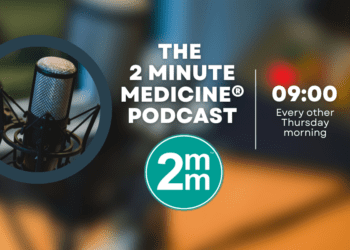Global mortality of neonates born preterm has decreased nearly 50 percent since 1990
1. In a study using global epidemiologic data, the worldwide incidence of preterm birth decreased by 5.3% between 1990 and 2019, and the associated mortality rate decreased by 47.7%.
2. Regions and nations with higher sociodemographic index (SDI) had significantly higher incidence of preterm birth over the same period, while those with low SDI had higher mortality rates.
Evidence Rating Level: 2 (Good)
Study Rundown: Preterm birth is associated with significant risk of neonatal complications, including death. Both preterm birth rates and outcomes for infants vary greatly between high-income and low-income countries. This study aimed to explore these differences as well as changes in preterm birth and mortality rates over the past 30 years using the 2019 Global Burden of Disease (GBD) study, a previously published model used to integrate epidemiologic data. The absolute global rate of preterm birth decreased by 5.3% from 1990 to 2019, while the mortality rate for infants born preterm decreased by 47.7%. When adjusted for population age distribution, the global incidence of preterm birth decreased by 0.19% per year, while mortality decreased by 2.09% per year. The age-standardized incidence of preterm birth increased in countries with high sociodemographic index (SDI), but decreased in other countries. Western Sub-Saharan Africa and South Asia had the highest age-standardized mortality rates. Mortality rates decreased between 1990 and 2019 in all regions except Southern Sub-Saharan Africa. Higher national SDI was significantly correlated with more positive change in incidence rates over time. This study provides a valuable high-level overview of how the incidence of preterm birth and mortality for neonates born preterm have changed over time on a global and country level. Interpretation of these results is limited by the quality of the underlying epidemiologic data and by the impossibility of correlating changes with underlying causes of mortality or changes in obstetric or neonatal care practices. Both the increasing incidence of preterm birth in high-income countries and failure of mortality rates to decrease substantially in low-income countries have been previously reported, but these data newly enable direct comparison of trends in incidence and mortality rates across many regions.
Click to read the study in JAMA Pediatrics
Relevant Reading: Born Too Soon: Care for the preterm baby
In-Depth [cross-sectional study]: Data were collected using the Global Health Data Exchange tool. Preterm birth was defined as live birth before 37 weeks gestation. SDI was intended to reflect development status and was calculated using income per capita, years of schooling, and total fertility rate. Analysis for correlations with SDI used countries’ and regions’ 2019 SDI. Estimated annual percentage changes (EAPCs) were calculated as change in incident cases over the studied time period divided by the number of incident cases at the period’s start multiplied by 100%. A large majority, 85%, of preterm neonatal deaths globally were neonates aged 0 to 6 days. The 95% confidence interval (CI) for the EAPC of -0.19% for age-standardized incidence rate over the study period was -0.27 to -0.11%; for the -2.09% EAPC of age-standardized mortality rate, it was -1.99 to -2.20%. The correlation between SDI and EAPC of age-standardized incidence rate had a ρ value of 0.41 (p < 0.001).
Image: PD
©2022 2 Minute Medicine, Inc. All rights reserved. No works may be reproduced without expressed written consent from 2 Minute Medicine, Inc. Inquire about licensing here. No article should be construed as medical advice and is not intended as such by the authors or by 2 Minute Medicine, Inc.







![The ABCD2 score: Risk of stroke after Transient Ischemic Attack (TIA) [Classics Series]](https://www.2minutemedicine.com/wp-content/uploads/2013/05/web-cover-classics-with-logo-medicine-BW-small-jpg-75x75.jpg)